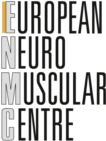 The absence of one of these forms of dystrophin in children and adults with Duchenne muscular dystrophy (DMD) or Becker muscular dystrophy (BMD), causes varying cognitive, behavioural and communication disorders. Approximately 50% of boys with DMD suffer from these problems, and a slightly smaller percentage of those with BMD. These disorders are no detected sufficiently well and are poorly managed, even though cognitive progress is possible.
The absence of one of these forms of dystrophin in children and adults with Duchenne muscular dystrophy (DMD) or Becker muscular dystrophy (BMD), causes varying cognitive, behavioural and communication disorders. Approximately 50% of boys with DMD suffer from these problems, and a slightly smaller percentage of those with BMD. These disorders are no detected sufficiently well and are poorly managed, even though cognitive progress is possible.
The 249th European NeuroMuscular Center (ENMC) workshop, which took place at the end of 2019 in Hoofddorp, in the Netherlands, the proceedings of which were recently published in the Neuromuscular Disorders review, brought together researchers, doctors and patient representatives, to review knowledge of the different forms of brain dystrophin, their involvement in cognitive disorders related to DMD and BMD, and the prospects for better managing and treating them.
Studying the practical consequences of a lack of dystrophin
A lack of the different forms of brain dystrophin (full length (Dp427), intermediate length (Dp140) and the shortest form (Dp71)) disrupts brain development, and impacts brain structure and/or function. A lack of Dp140, a form that appears early in development and that remains subsequently, leads to white matter abnormalities, with consequences on neurodevelopment. A lack of Dp71 affects the GABAergic signalling system, with an early impact on synaptic development and cognitive and behavioural disorders. However, the relationship between each neurodevelopmental and emotional disorder, and the loss of dystrophin is not yet clear.
Studies relating to mice models for different DMD gene mutations, mdx23 and mdx52 mice. The mdx23 mouse shows emotional and anxiety disorders and a high degree of sensitivity to stress, while other functions are preserved: these disorders are similar to those observed in boys with DMD.
Characterising cognitive disorders in DMD and BMD
A meta-analysis of 52 studies relating to a total of 4202 boys with DMD and 420 with BMD showed that, among DMD patients, the frequency of occurrence for autism spectrum disorder (ASD) was 17%, attention deficit and hyperactivity disorder was 26%, and anxiety and depression was 22% and 14% respectively. Among BMD patients, anxiety was found in 19% of patients and depression in 17%.
Furthermore, a study using an indicator that reflects emotional response adaptation to a fear stimulus (fear response) showed that boys with DMD reacted in an “overly dramatic/exaggerated” manner, although a more appropriate response could be acquired.
A European project called “Brain involvement in dystrophinopathies” (BIND), coordinated by Prof. I. Desguerre (Necker–Enfants Malades Hospital, Paris) was set up to collect data and better characterise the relationship between dystrophin and cognitive impairment, in Duchenne and Becker muscular dystrophies, in animals and humans.
Potential treatments
Studies are analysing the effects of existing medicines such as methylphenidate (to combat attention deficit disorder), and fluoxetine (an antidepressant). Other medicines that improve vascularisation and oxygenation are also being studied, such as sildenafil. Three exon-skipping approaches are in preclinical development for DMD. Two are being assessed in mdx23 mice and seem to improve cognitive disorders (fear, emotional response).
Relying on existing cognitive abilities in everyday life
While motor ability may be deteriorating, cognitive performance can be consolidated. During this workshop, representatives for Patient Associations (Parent Project Muscular Dystrophy and AFM-Téléthon) insisted on the need to better diagnose cognitive disorders, so that some of these are not missed. Disseminating knowledge to medical professionals would help to diagnose cognitive disorders in DMD and BMD; this should ideally be detected by psychology and neuropsychology experts.
They also stressed the need to properly inform parents about the difficulties that these children face. This opens up the possibility of better managing these children, with the aim of using all the child’s existing potential. Having a positive view of these child disorders helps to build on these abilities. For example, some of the solutions include considering the child’s stubbornness as positive obstinacy or disharmonious cognitive abilities as potential talents, or compensating for short-term memory deficiencies by working on improving long-term memory. Tools such as the NIH Toolbox can help to better monitor neuropsychological abilities; others such as those proposed on the www.cogmed.com website (in English) can be used in rehabilitation.
